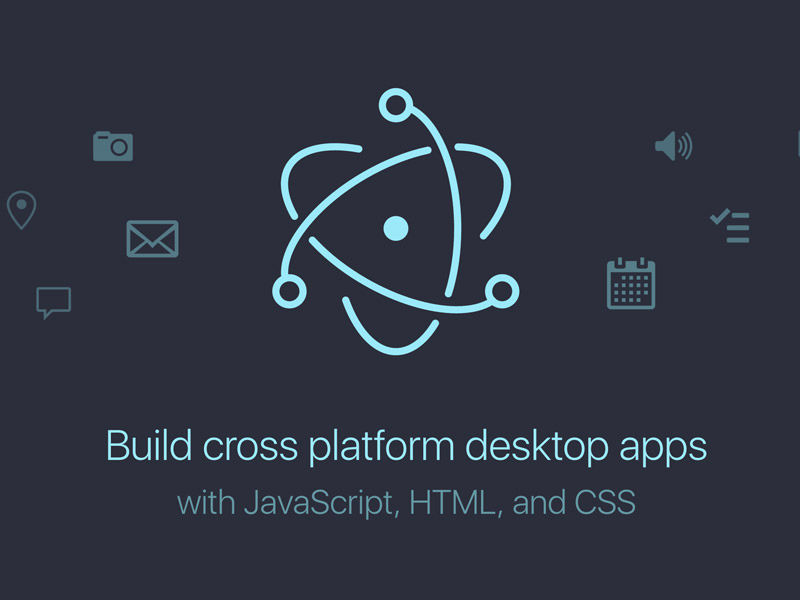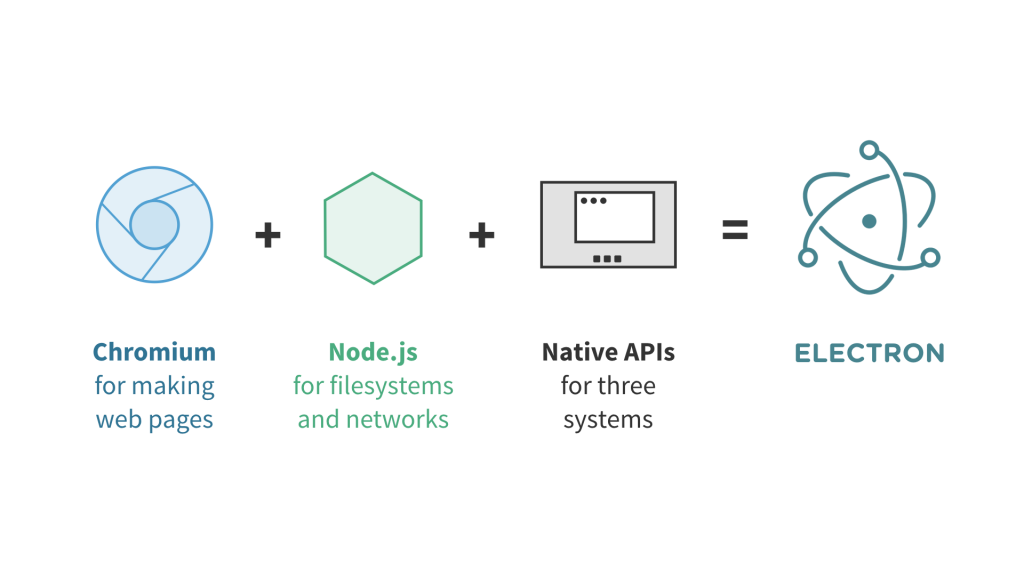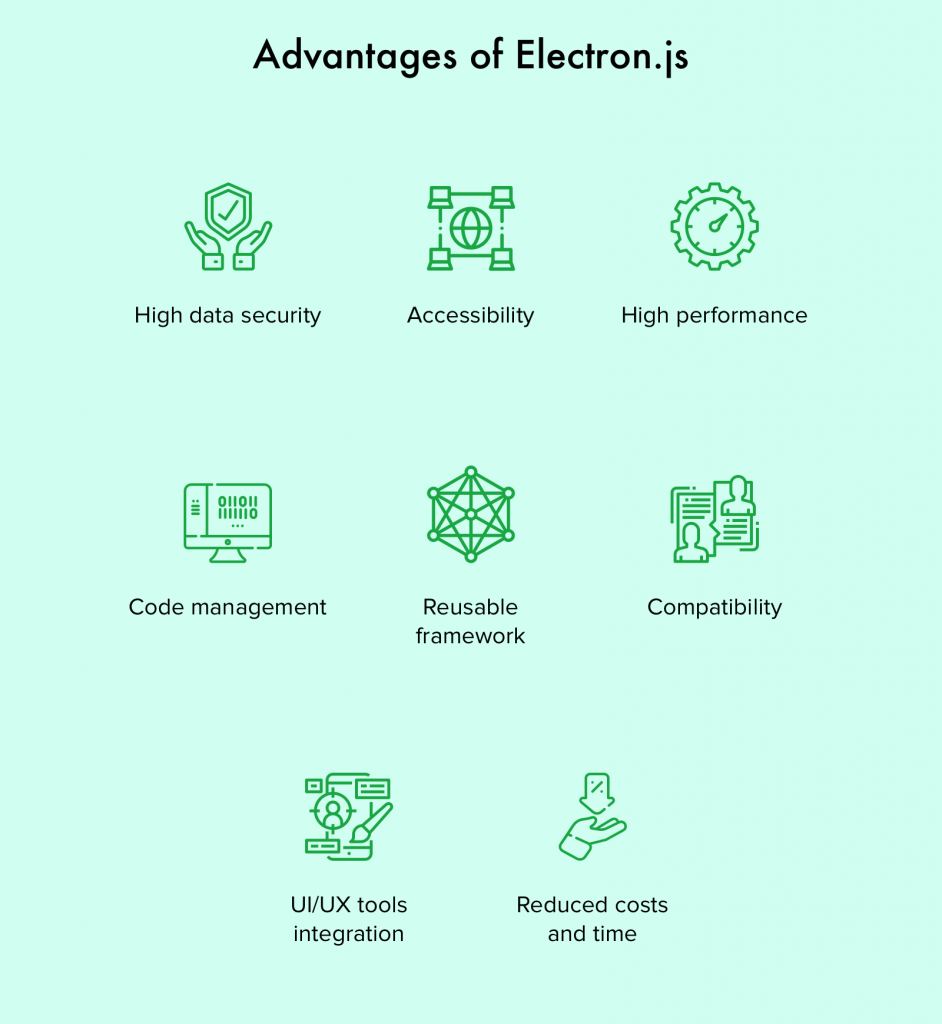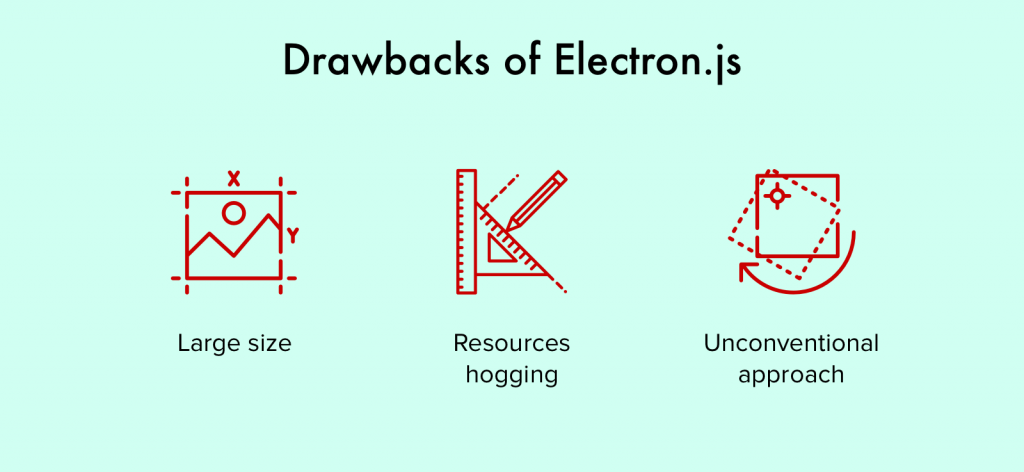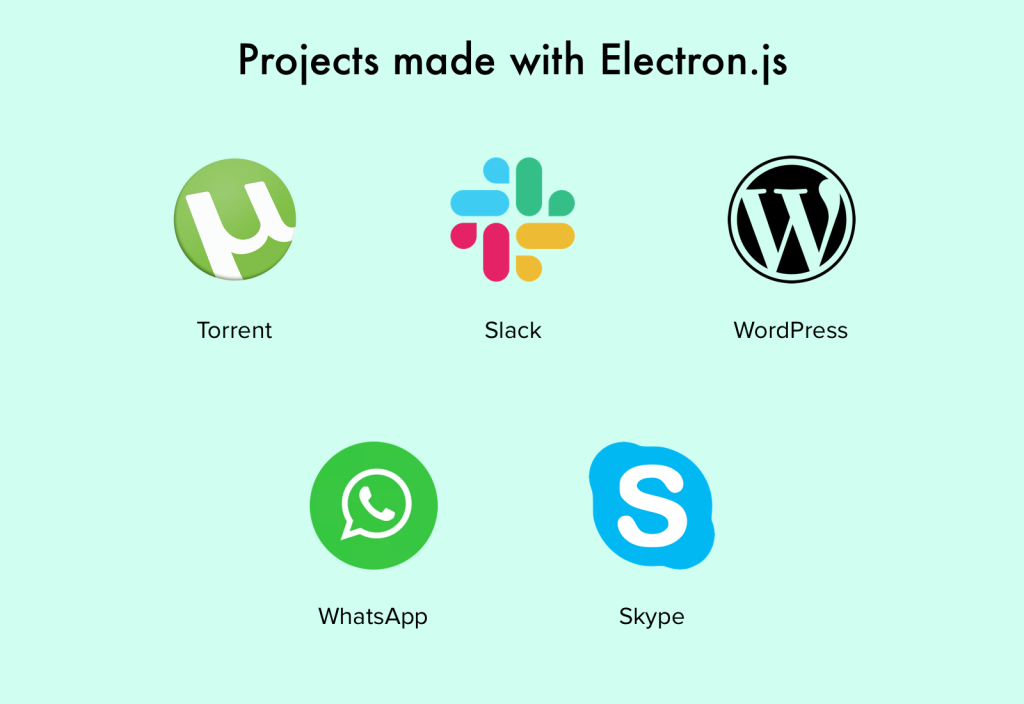Although it may seem that the age of desktop apps is coming to an end, it would be a hasty decision to call them outdated. For now, cross-platform desktop app development remains quite popular – not least because of new technologies like Electron.js.
In this article, we’re explaining the main details of this technology – what is Electon.js, its pros and cons, and best Electron app examples.
What’s Electron.js?
Electron.js is a platform that allows developers to build cross-platform desktop applications using HTML, CSS, and JavaScript. Besides, lots of JavaScript libraries and frameworks – any single-page (SPA) app framework, in fact – can be used with Electron.
Electron.js makes the building of desktop apps much easier – with the help of web environment. And Electron applications gain more and more popularity. This technology is a new era in the world of desktop software development.
Electron is an open-source framework created by GitHub for Atom code editor. Applications developed with its help act like web apps but they read and record data in a file system of a computer.
Source: jlord.us
One of the main benefits of Electron is that devs don’t need to learn to work with new tools and technologies for delivering desktop applications. The framework uses already developed business logic, design and structure. It’s a great way to reduce the cost and save precious time, for both customers and web developers. All that devs need to learn to create their first desktop apps is how to use Electron, how it works, and understand its API functionality. Most experienced JavaScript developers can start building their Electron apps in just a few days.
It’s a great technology appreciated by a fast-growing community. With the help of the Chromium engine, devs use Developers Tools and Storage Access. That’s why desktop applications run on any platform – Windows, MacOS, Linux, or mobile platforms like Android and iOS.
Main Advantages of Electron.js Platform
To get familiar with the best sides of Electron.js, let’s take a look at the benefits this technology offers.
High-level data security:- Data is stored locally, so there would be no issues with turning the existing app into a desktop one with the help of Electron. But if app owners wish to have their data stored in a cloud, developers should first make sure the cloud is secure enough.
Easy access:- Devs have free access to hardware level API using JS or Plugin. Electron.js offers lots of features and it won’t be an issue to define the features needed for desktop apps. Besides, the migration to Electron won’t be a challenge at all.
Great performance:- Electron apps may function even better than native apps in some cases. Still, it depends on what components the desktop app uses and whether it loads only the necessary ones. What’s more, the development is much easier and faster due to a single code base.
Simple management:-Clients won’t have any issues with explaining their requirements to the devs team as everything is delivered for all the platforms at once. Besides, customers don’t need to check each application to make sure they all have the same functionality. And as engineers work with the same code base, it greatly reduces the development time, and bugs can be fixed in the base – no matter where they occur.
Reusable framework:- Again, due to a single code base, Electron.js can be used for both desktop and web apps. There’s no need to build a new code base for each platform. Once coded, it can be used on all operating systems if the need arises.
Compatibility:- Electron.js works with JavaScript frameworks and libraries. And they are quite enough to build high-quality products. Node.js, Angular, Vue, React – it’s not the full list of technologies developers may use with Electron.
Working with UI/UX tools:- Web technologies give access to various designing tools that enhance desktop app on different platforms and make the app design captivating. And UI/UX design is the same for all platforms, so you remain sure Windows users see the same picture as do those who prefer macOS.
Time and resource savings:- Probably the main reason why devs enjoy working with Electron.js. It takes less time to create desktop apps, and less time means cheaper cost. Works for both customers and development teams.
So these are the main advantages Electron.js framework brings. But there always are dark sides, and it’s time to find out more about them.
Disadvantages of Electron.js
Big size:- Electron app (desktop and web) has its own version of Chromium. And Chromium browser is quite heavy containing tens of millions of code lines. In fact, it’s as heavy as an operating system. That’s the reason an app turns into a heavy block of software occupating a large part of the hard drive. But nowadays it’s not a big problem – PCs may easily provide with 2 terabytes of internal memory for users.
Resources hogging:- Electon.js apps also hog up system resources, RAM, and consume battery energy pretty quickly (if we speak about laptops). Why so? It’s connected with Electron apps optimization for various systems. And as all the platforms are different, average optimization is not energy efficient. Native apps are developed specifically for one platform so their resources are much better optimized.
Specific requirements:- Here I speak about customers’ individual requirements and expectations. Usually, Electron.js applications function in the same way and are identical on all platforms. But if customers want a unique design for each platform, it brings additional complexities for the development team. First of all, they’ll spend much time on implementing the unique features for each new platform. Second, the more time they spend, the more is the development cost. And, most important, it just won’t work. Think of any cross-platform application – it’s identical on any OS. That’s why app owners should consider their products’ identity beforehand.
5 Best Apps Build With Electron.js
Let’s take a short look at most popular Electron.js applications. I’m sure you’re familiar with most of them and even use some on a regular basis.
1. WebTorrent
We all know what torrent is. And torrent-files – files that people exchange using peer-to-peer connection. Users store files on their PC or mobile devices, and the more people keep a file, the more is its download speed.
WebTorrent was developed with the help of Electron.js and other tools JavaScript offers. It users WebRTC technology for the mentioned peer-to-peer connecting. WebTorrent Desktop application is built for three platforms – Windows, macOS, and Linux. It keeps the app connected to popular BitTorrent and WebTorrent networks.
2. WordPress
WordPress is a very popular content management system used for editing and management of a website. Apart from the web version, the desktop application was also delivered using Electron.js to cover a few platforms at once. This way, Windows and macOS users take advantage of WordPress desktop without any issues, using its features to the fullest.
Besides, due to Electron.js, WordPress desktop app loads fast on all the platforms. Apart from Electron, React library was also applied for providing a top-notch user experience.
3. Slack
Slack is a corporate messenger widely used among employees of any-size companies. They create private channels, exchange messages, and the application has its own hosting. Slack is created for all popular OS like Windows, macOS, Linux. Mobile platforms – Android and iOS – are covered too.
Slack developers decided to use Electron.js UI framework to distribute a desktop version on all available platforms and do it quickly. Besides, it’s much more convenient for the team to maintain Electron-based version – again, due to a single codebase.
4. WhatsApp
This is one of the most popular messenger apps in the world. Using the app, people chat, make video and voice calls, share contacts, images, and many more. And the service offers one unique feature – the self-destruction of messages after a specific period of time. Currently, the app is available for Windows and macOS – there’s no official Linux version for now.
Developers used Electron.js working on WhatsApp desktop application to ensure high performance and simplify the management process.
5. Skype
Finally, it’s the well-known Skype messenger that was also built with the help of Electron.js framework. The app offers voice and video calls, chats and paid calls to mobile and landline phones. There are desktop versions for Windows, MacOS, and Linux.
Sure, there are lots of other widely-known apps built with Electron.js. But these are the most popular and the best ones in terms of functionality, design, and features they offer.
Why Opt for Electron.js Framework?
Web and .Net developers make use of Electron applying it to create cross-platform applications and deliver high-quality products on various platforms. But why exactly they choose Electron.js instead of other suitable frameworks?
First, this tool is supported to the fullest. So it’s quite easy for devs to learn how to use this product, it’s not a complicated framework, there’s no difference in working with it on different platforms. Besides, Electron integrates with lots of JavaScript libraries and frameworks, and it’s quite easy to use and apply for creating cross-platform apps.
Second, Electron-based apps are, in fact, web apps. That means Electron.js is a web technology, and developers can easily turn desktop apps into web ones when needed. Electron is a very convenient and versatile tool when it comes to web app development.
In conclusion, I’d like to mention that Electron.js takes care of a great deal of desktop and web apps helping to connect them with a wider audience. And that is exactly what makes the tool extremely popular. After all, it’s a job of any open-source framework to help developers in creating and delivering top-notch apps with seamless performance.
